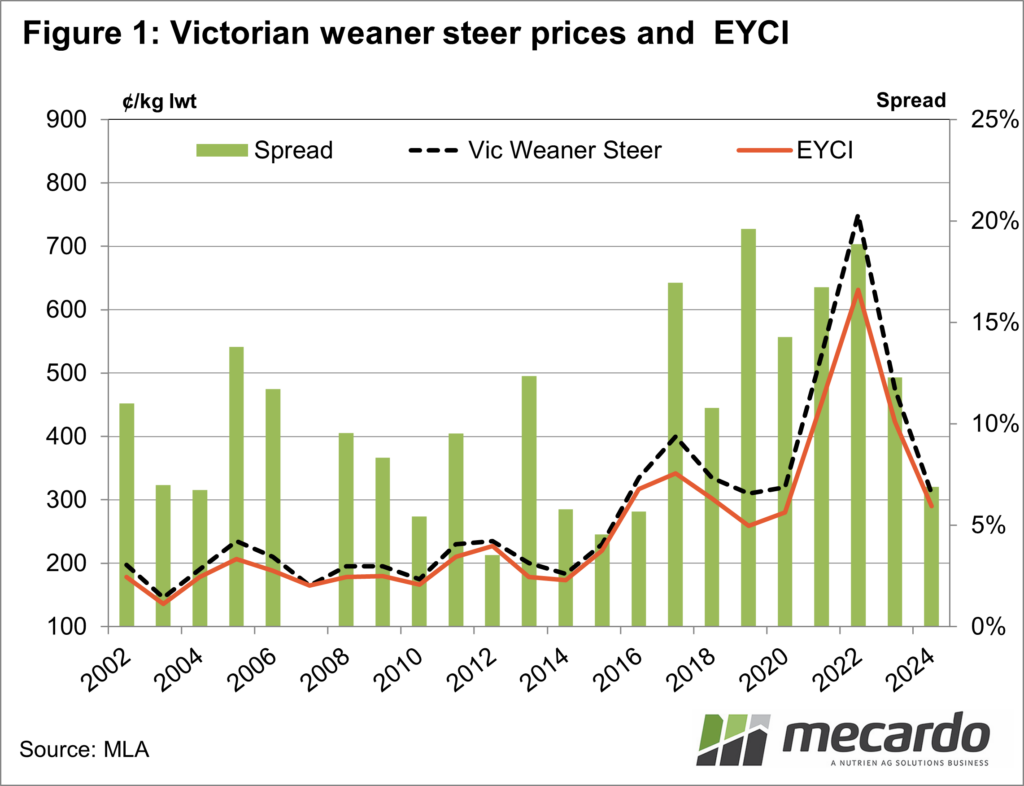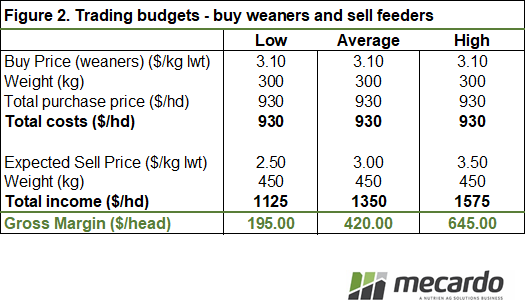The annual southern weaners sales are on, and there appears to be plenty on the market this year. There are a couple of ways we like to measure value, and while prices are well up on the doldrums of mid-2023, weaners still look like reasonable buying.
Hindsight is the only
real way to assess whether something was good buying or not. It’s only when a sale is made, and profits
are calculated, we can really decide. In
the absence of forward cattle prices, we are left with measuring value on using
historical data, and some educated forecasting.
Regular readers will
know we like to measure store stock value in three different ways. The price relative to the prevailing
indicators at the time, in this case, the Eastern Young Cattle Indicator (EYCI). The absolute price relative to historical
levels, and the potential profit, are based on some educated assumptions on
future value.
Anecdotal reports are
that cattle producers are happy with current weaner prices. There is a bit of
recency bias in this. Back in October, many would have been grappling with
weaners at $2/kg lwt, so a price in the high 2s and up to $3.40 looks great.
Figure 1 shows that
compared to weaners sold last January, prices (we’ve used 310¢/kg lwt as an
average) are down 32%, and 57% on the heady days of 2022. Weaner prices this
year are back in the range they traded from 2016-2020, which, as shown in Figure
1, is well above the historical range.
Looking at the weaner price
spread to the end of December EYCI, the 310¢/kg lwt is just a 7% premium. This is the lowest the weaner premium has
been to the EYCI since 2016. This is a
reasonable indication that weaners are relatively cheap.
Finally, we need to
look at the profit prospects of weaners bought now. Figure 2 shows a basic trading budget for
300kg weaners bought at 310¢/kg lwt to sell as feeders in six to eight months.
The margins this year
look strong, as to be expected when prices and basis are relatively low. With strong international beef prices, our
prices should remain steady, or track higher, which brings the high scenario in
Figure 2 well into the equation.
Note that this trade
calculation does not allow for any feed costs; these will vary between
enterprises and should be calculated on a case-by-case basis when considering
any trade.
What does it mean?
Cattle producers who sell weaners in January have dodged the worst of the cattle market, but there is still some value for buyers at current rates. It would take a return to the doldrums of 2023, for cattle bought now to make a loss.
Have any questions or comments?
Key Points
- Southern weaner sales prices are up from the lows of mid-2023, but down on this time last year.
- The premium for weaners to the December EYCI is relatively low.
- Based on price projections current weaner prices will likely be profitable for buyers.
Click on figure to expand
Click on figure to expand
Data sources: MLA, Mecardo














